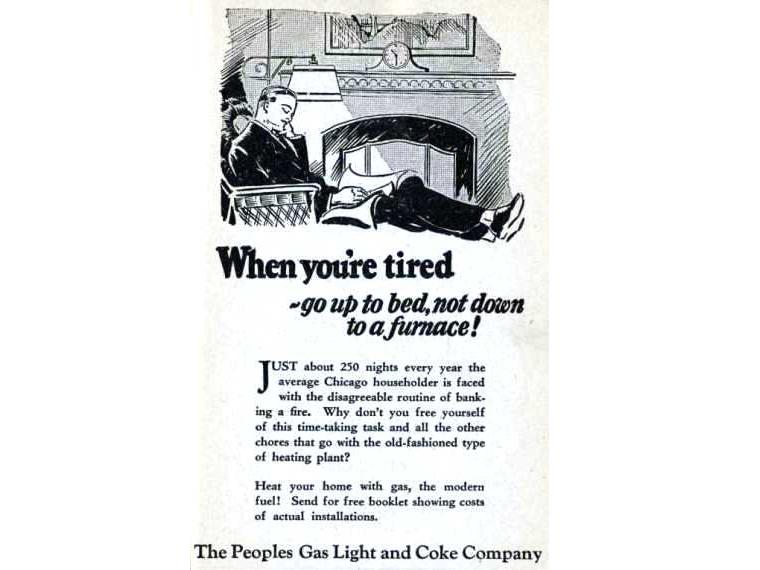Coal was also the dominant home heating fuel in Chicago. The 1940 Census shows that there were 949,744 occupied housing units. Of these 625,310 had coal central heating, 182,509 used coal stoves, about 100,000 used fuel oil and 40,000 used gas heat, along with a few thousand using other fuels. Thus about 85 percent of the households used coal.
In 1950, there were 1,071,735 occupied housing units; 600,955 with coal central heating; 69,310 with coal stoves; about 163,000 with gas; about 200,000 with liquid fuels. Thus 63 percent used coal.
The Current Housing Survey shows that in 1970, 198,000 or 17 percent of the households used coal. Five years later, only 15,000 or 1.5 percent still used coal. Natural gas now heated 80 percent of all households.
Many buildings burned garbage with coal to produce heat and hot water. Coal heating was not an automatic process. Large buildings needed employees to move coal and ash, and run the boilers. Residential buildings of even a modest size employed members of the Flat Janitor’s Union to collect garbage. In the 1980s many of these jobs were eliminated. The Municipal Reference Library received calls from angry tenants who now had to haul their own garbage down the stairs.
Although a portion of Chicago’s electricity is still produced from coal, the last two coal-fired electric plants in the city were shut down in 2012. Coal is still used to make steel in Northwest Indiana. Inside the city, the only users seem to be a few coal fired pizza restaurants.
Air pollution from coal burning has been both a concern and a source of pride. In 1881 Chicago was among the first cities to regulate smoke emissions. In 1907 the Department of Smoke Abatement became part of the city government. One successful effort involved converting the Illinois Central Railroad to electric power in the 1920’s. Among other concerns, it was thought that trees were unable to grow in Grant Park due to coal smoke. Air pollution control has remained among the city’s responsibilities.




Add a comment to: Coal, Continued: Technology That Changed Chicago